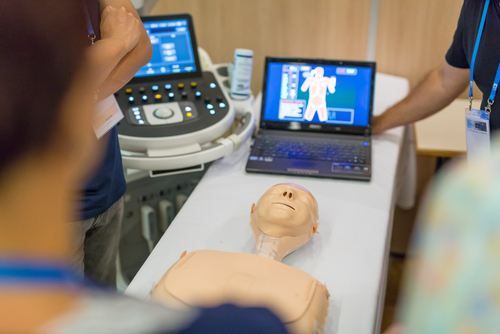Majority of physicians and med students lack knowledge about brain death
M3 Global Newsdesk May 11, 2018
“Determining brain death is a complicated, nuanced process, and it is imperative that medical students be educated about what it is and how to evaluate for it.” Dr. Lewis.

It’s not surprising that the general public doesn’t understand the differences between brain death, persistent vegetative state, and coma. But what’s more concerning is that many physicians aren’t knowledgeable about the criteria and procedures for determining brain death.
According to a 2014 study, physicians correctly answered only 41% of questions on a test about brain death certification. Neurologists and neurosurgeons—who are specifically trained to determine brain death—didn’t score much better, getting only 54% of the questions right.
Given that 67% of hospitals in the United States don’t even require a neurologist or neurosurgeon to perform brain death evaluations, all physicians should understand brain death, said neurologist Ariane Lewis, MD, assistant professor, Departments of Neurology and Neurosurgery, New York University Langone Health, New York, NY.
In a recent study published in Clinical Neurology and Neurosurgery, Dr. Lewis and coauthors showed that a 90-minute training course significantly improved medical students’ knowledge about and ability to diagnose brain death, as well as their comfort communicating with patients’ families about the subject.“Determining brain death is a complicated, nuanced process, and it is imperative that medical students be educated about what it is and how to evaluate for it,” Dr. Lewis said.
More medical students had encountered the term “brain death” on the internet (88%) and on television (77%) than in a preclinical medical school class (76%) or during their neurology clerkship (74%), the researchers found.“Mainstream media, television, and movies generally portray brain death poorly, so it goes without saying that these should not be the sources from which medical students learn about brain death,” Dr. Lewis and coauthors wrote.
Accordingly, 145 NYU Medical School students participated in the mandatory training course during each neurology clerkship between July 2016 and June 2017. In the first 45 minutes of the course, Dr. Lewis led a classroom-based lecture that addressed the medical and legal history of brain death, as well as prerequisites and instructions for performing a brain death evaluation, tests associated with confirming brain death, and recommendations for communicating with families about brain death.
Following the didactic half of the course, students participated in a 45-minute simulation session in which they practiced diagnosing brain death using an intubated mannequin. A simulation facilitator adjusted the vitals and manipulated the mannequin from a control room. Beginning in October 2016, actors were added to the simulation to play the role of the patient’s wife. Medical students were instructed to speak with her before and after evaluating the patient.
“Combining teaching with simulation and adding actors to portray family members can significantly improve a medical student’s knowledge and comfort with determining brain death.”
“For medical schools that have the access to simulation centers and have clinical staff to provide the education for students, this is a great opportunity to learn about brain death and walk through the process of a brain death determination.”
-Dr. Lewis
MD, assistant professor, Departments of Neurology and Neurosurgery, New York University Langone Health, New York, NY.
Comfort with both performing a brain death evaluation and talking to a family member about brain death improved significantly after the course, researchers found. Before training, 18% of students said they were comfortable performing a brain death evaluation, but that percentage increased to 86% after the course (P < 0.001). Similarly, 18% of students reported before the course that they felt comfortable talking to a family member about brain death. After the course, 76% said they were comfortable having such a discussion (P < 0.001).
Before the training, students correctly answered 53% of questions on a test about brain death. They got 86% of questions correct on a test after the training (P < 0.001).“Medical student knowledge about brain death and comfort performing a brain death exam or talking to a family about brain death was limited prior to the development of this initiative, but awareness and comfort dealing with brain death improved significantly after this initiative,” Dr. Lewis and coauthors concluded. “Ongoing efforts should be made to educate medical students, trainees, and faculty about this important topic.”
This story is contributed by John Murphy and is a part of our Global Content Initiative, where we feature selected stories from our Global network which we believe would be most useful and informative to our doctor members.
-
Exclusive Write-ups & Webinars by KOLs
-
Daily Quiz by specialty
-
Paid Market Research Surveys
-
Case discussions, News & Journals' summaries